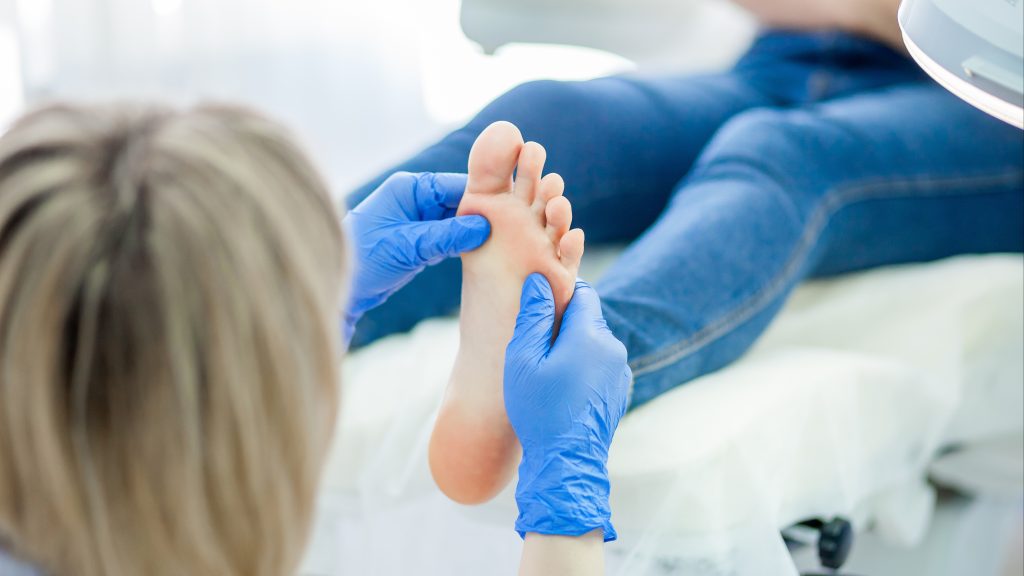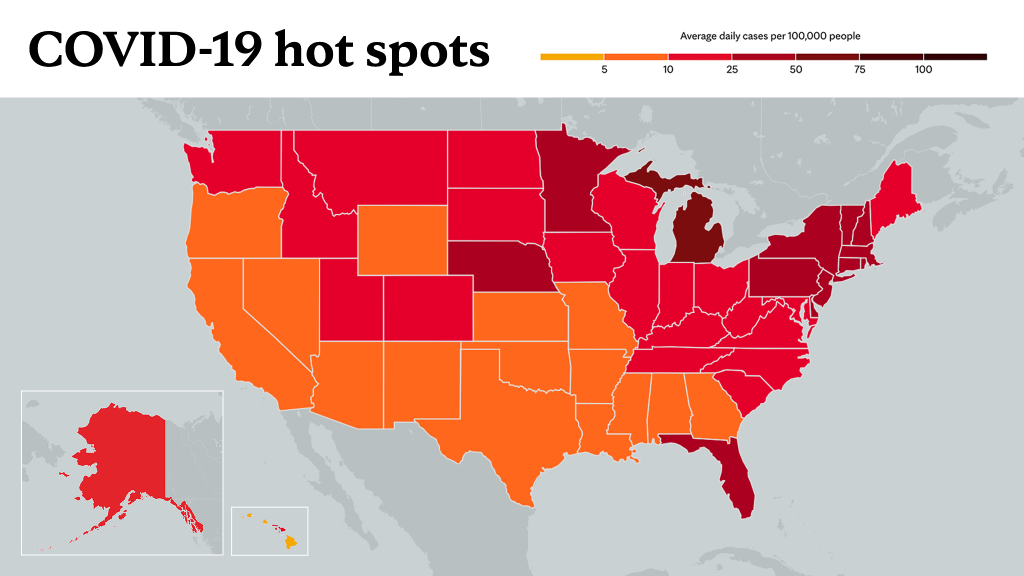
DEAR MAYO CLINIC: I am prone to hives and skin rashes, and I have severe eczema and other issues that prompted a recent visit to my dermatologist. She suggested that a rash on my feet was related to COVID-19. She also suggested that I be tested for COVID-19. I was shocked when the test came back positive. Can you explain what this phenomenon is?
ANSWER: Having sensitive skin can be challenging enough. While we generally think about fever, cough and fatigue as the most common symptoms of COVID-19 infection, sometimes skin reactions may prompt your health care provider to recommend testing for COVID-19, as well.
From the beginning of the COVID-19 pandemic, health care providers around the world began observing and sharing that some patients who are found to be infected with COVID-19 have new skin issues related to the illness. One of the more unique skin changes that has been seen is discoloration and inflammation of the toes, an eruption that has been coined "COVID toes."
Little is known about COVID toes, which, despite its name, also can occur on the hands. The presentation of COVID toes mimics a well-known skin condition called pernio. Pernio, also known as chilblains, is a skin eruption that causes itching, red patches, swelling and even blistering on the fingers or toes after exposure to cold. Traditional pernio is thought to be an abnormal blood vessel response to cold temperatures. It is more common in women, underweight people and in some people with other underlying health conditions.
Symptoms of pernio associated with COVID-19 include redness; purple discoloration; swollen bumps; and areas of hemorrhage on the skin, in which blood leaks into the surrounding tissue. The digits may be itchy and can burn, as well. In patients with darker skin, the discoloration may present as new itchy or swollen brown spots on the fingers and toes.
During the COVID-19 pandemic, these changes have been seen with increased frequency in patients with no previous history of pernio and in warm climates. In some cases, multiple family members have developed similar skin symptoms at the same time.
Little is known about why COVID-19 can induce these skin changes. It's believed that COVID-19 causes inflammation or clotting in the superficial vessels of the feet, and causes these vessels to constrict. This is likely due to an inflammatory response affecting the blood vessel walls, blood cells or a combination of both. The symptoms can become painful and last for several weeks to months in some patients.
Although much is still be learned about this condition, it seems to be more common in children, teens and younger adults. Most of these people appear to be otherwise healthy and may not have any other symptoms to suggest COVID-19 infection. Most commonly, this seems to occur weeks after exposure to COVID-19 and often appears after other COVID-19 symptoms have resolved, if they were ever present. Many patients have negative COVID-19 tests at the time that the skin changes are seen.
While COVID toes has been the most widely discussed skin change associated with the pandemic, a wide variety other rashes have been noted to occur in patients infected with COVID-19, as well. Other reports of skin changes associated with COVID-19 have included scattered blisters on the skin; red flat or raised rashes; hives; and other changes associated with occlusion of blood vessels, such as mottling of the skin.
If you are concerned about any new skin changes during this pandemic, it is always a good idea to touch base with your health care provider for guidance on whether additional testing is recommended. Also, make sure you are still following appropriate safety measures related to good hand hygiene and skin care, as well as masking and social distancing. ― Dr. Katherine Bodiford, Department of Dermatology, Mayo Clinic, Jacksonville, Florida
____________________________________________
Information in this post was accurate at the time of its posting. Due to the fluid nature of the COVID-19 pandemic, scientific understanding, along with guidelines and recommendations, may have changed since the original publication date.
For more information and all your COVID-19 coverage, go to the Mayo Clinic News Network and mayoclinic.org.
Learn more about tracking COVID-19 and COVID-19 trends.








